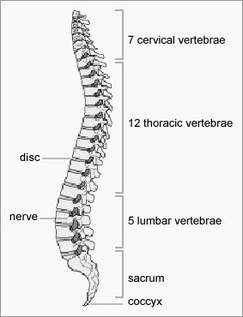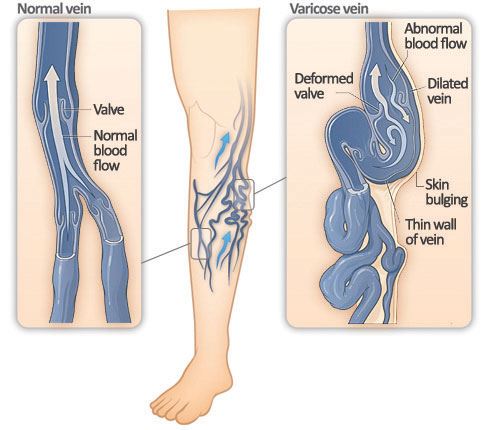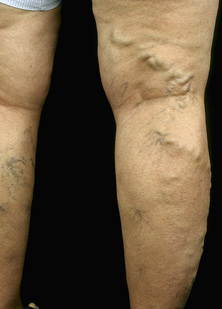In a blog early on (http://anthropologicalconcepts.weebly.com/blog/bipedalism-one-step-closer-to-becoming-homo-sapien) I spoke of how being bipedal was a huge step for our evolutionary ancestors. I covered the advantages of this evolutionary breakthrough in said blog, but I did not go into the disadvantages. This blog will cover just that. And these are disadvantages that we live through or are going to live through thanks to the thing that helped keep our species alive. By this I mean I will speak of pain, stress, or damage that being bipedal can cause.
It seems to be normal for the birthing process to be painful for human females, but it was not always. As I stated in my blog describing the difference between the male and female skeletal structure (http://anthropologicalconcepts.weebly.com/blog/male-or-female), the shape and position of the human female pelvis is what makes birthing painful. The human birthing process is “weird” by other animal's standards. The average time a human female spends in labour is a good nine or more hours, while all other primates give birth within two hours. Another evolutionary problem that makes birth painful is the size of the skull. The reason this is also evolution's fault is because bigger brains means bigger skulls. This is also why, when human babies are born, they are helpless because they have not completely...formed in a way. If they were to stay long enough to be more cognitive, like let us say a baby chimpanzee, the head would be too big to get through the birth canal and will most likely kill the mother. “we need a wide pelvis to bear big-brained babies but a narrow one to walk or run efficiently.”
There is something only humans can do because of our bipedalism, but with this something it causes stress but can cause pain later in life. What I am talking about is lifting heavy objects. You may have heard the phrase “lift with your knees not with your back.” While that is optimum, the knees are not very happy about it. After a while with lifting or just running the cartilage and joint fluid (lubricant) that is between the femur and tibia can wear down, and when it does that leads to knee pain because the bones will now be rubbing directly against each other. This in turn cases arthritis. Even if your knees get the focus when lifting heavy things, just walking, not even running, can affect the lumbar (lower back) region. Reason for this is when walking the curve of the lumbar region (image below) absorbs the shock. This is a good thing because without the shock absorbing lumbar it would be incredibly painful to walk. The entire back would hurt if it were straight; that or we would still be quadrupedal. There are also cases of slipped discs (“a vertebral disc that is displaced or partly protruding, pressing on nearby nerves and causing back pain or sciatica.”), but that mainly happens because of injury or weakness; also these can happen anywhere in the vertebrae, not just the lumbar region.
It seems to be normal for the birthing process to be painful for human females, but it was not always. As I stated in my blog describing the difference between the male and female skeletal structure (http://anthropologicalconcepts.weebly.com/blog/male-or-female), the shape and position of the human female pelvis is what makes birthing painful. The human birthing process is “weird” by other animal's standards. The average time a human female spends in labour is a good nine or more hours, while all other primates give birth within two hours. Another evolutionary problem that makes birth painful is the size of the skull. The reason this is also evolution's fault is because bigger brains means bigger skulls. This is also why, when human babies are born, they are helpless because they have not completely...formed in a way. If they were to stay long enough to be more cognitive, like let us say a baby chimpanzee, the head would be too big to get through the birth canal and will most likely kill the mother. “we need a wide pelvis to bear big-brained babies but a narrow one to walk or run efficiently.”
There is something only humans can do because of our bipedalism, but with this something it causes stress but can cause pain later in life. What I am talking about is lifting heavy objects. You may have heard the phrase “lift with your knees not with your back.” While that is optimum, the knees are not very happy about it. After a while with lifting or just running the cartilage and joint fluid (lubricant) that is between the femur and tibia can wear down, and when it does that leads to knee pain because the bones will now be rubbing directly against each other. This in turn cases arthritis. Even if your knees get the focus when lifting heavy things, just walking, not even running, can affect the lumbar (lower back) region. Reason for this is when walking the curve of the lumbar region (image below) absorbs the shock. This is a good thing because without the shock absorbing lumbar it would be incredibly painful to walk. The entire back would hurt if it were straight; that or we would still be quadrupedal. There are also cases of slipped discs (“a vertebral disc that is displaced or partly protruding, pressing on nearby nerves and causing back pain or sciatica.”), but that mainly happens because of injury or weakness; also these can happen anywhere in the vertebrae, not just the lumbar region.
This last condition applies not so much to the bone, but to the veins. It is called varicose veins (images below). Although many factors can effect the probability of getting this condition, one main one is being bipedal. Reason being is humans are fairly tall for being bipedal, “the circulatory system has to move blood from the legs to the heart. In some cases, the valves in the veins of the legs break down and blood pools, causing the veins to bulge.” Do not fret, it happens to about fifty to fifty-five percent of women and even less in men at forty to forty-five percent, but this statistic is only for those in the United States. As I stated at the beginning of this paragraph there are many factors, so the likeliness for someone to get these types of veins without these factors is very minute. The first factor is going to happen to all of us, which is getting older, but with this you would have to take into account medical history (this included being born with weak veins or having family members with vein problems), obesity (which puts extra pressure on the veins), or lack of movement (“Sitting or standing for a long time may force your veins to work harder to pump blood to your heart. This may be a bigger problem if you sit with your legs bent or crossed.”). This condition cannot be cured, but it can be treated.
With everything that can and does go wrong because of the main source of transportation for humans, it almost does not seem worth it. Almost. When you think about it, it is worth the risk of being bipedal. Some may think that evolution “screwed us over,” but without being bipedal, we would most likely either not have evolved as much as we have, or would have been eaten to extinction (yay for being able to look over tall grass). I think the pro's of being bipedal greatly outweigh the con's.
Please feel free to comment on what you thought of the blog, or other physical anthropological subjects you would like me to cover.
Please feel free to comment on what you thought of the blog, or other physical anthropological subjects you would like me to cover.



 RSS Feed
RSS Feed
